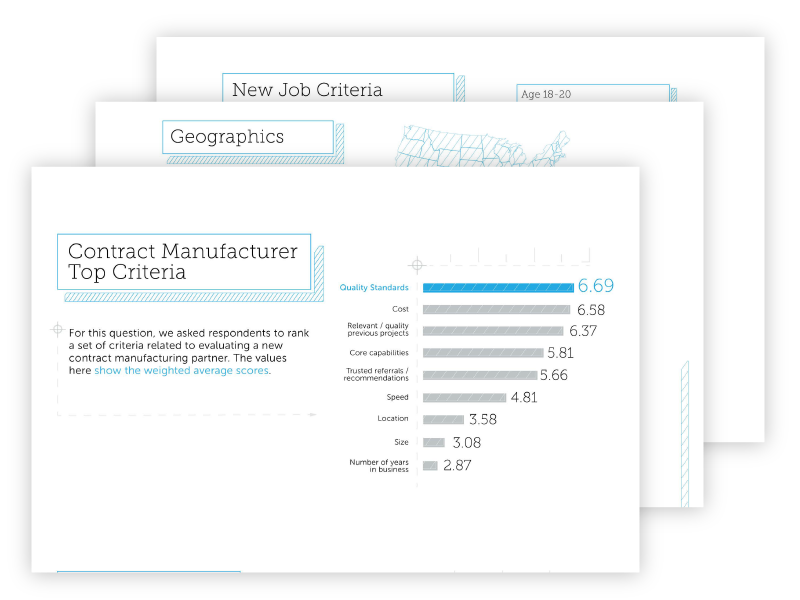To transform an idea into a commercially-viable hardware product requires vast reserves of curiosity, creativity, and grit. But there are so many valuable learnings along the way that can make the process of hardware development more seamless and efficient. Things like: part symmetry is your friend. And you should never underestimate the value of strategic planning before fabrication.
At Fictiv, we’re committed to documenting this knowledge to make hardware development easier and more accessible, to unleash the next wave of innovation in engineering and design. That’s why each year, we create our State of Hardware Report, to help engineers and designers deepen their understanding of their fields, careers, and industries and also democratize information around product development and manufacturing.
In 2016, we surveyed 213 engineers and designers, sharing insights around the prototyping tools most frequently leveraged, the most popular CAD programs, how companies budget for different product development stages, and lots more.
This year, over 340 engineers and designers participated in our State of Hardware Survey, telling us about their most utilized tools and knowledge resources, the criteria they use to make important career and work decisions, and even their most wished-for super power, to name a few.
The State of Hardware Report is a big community effort—help us share the report with more people by sending it onto a friend or colleague.







